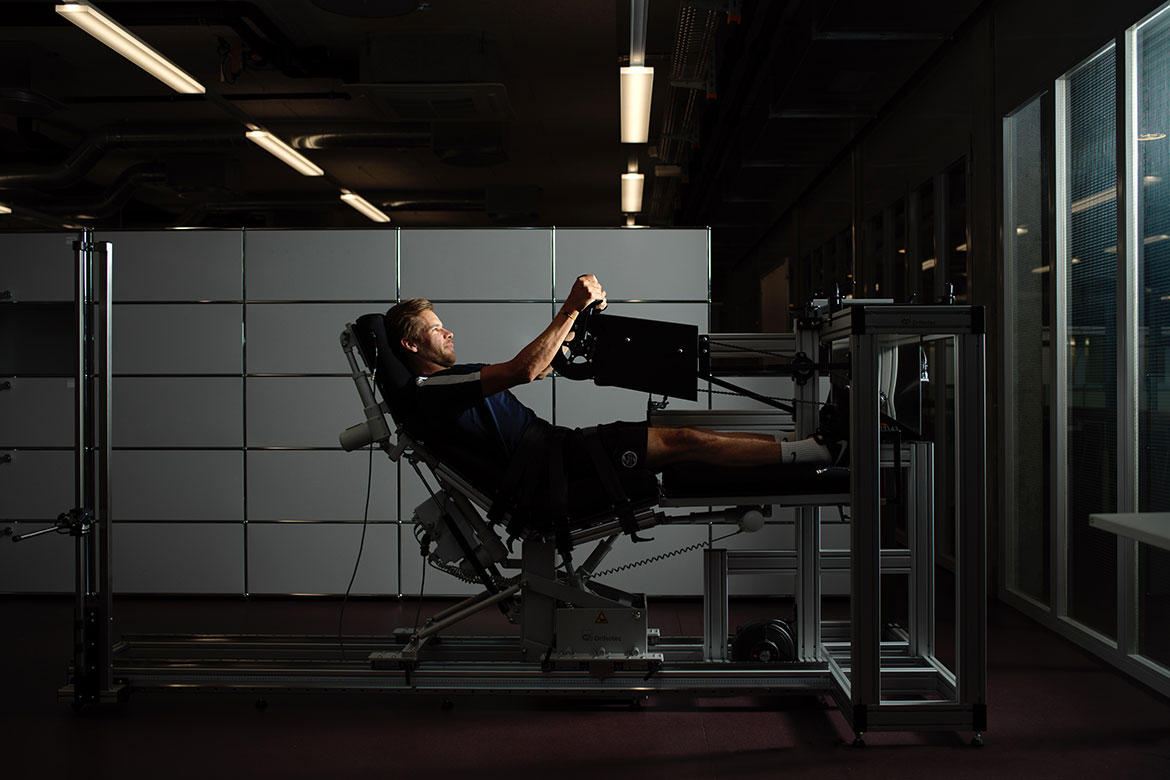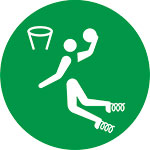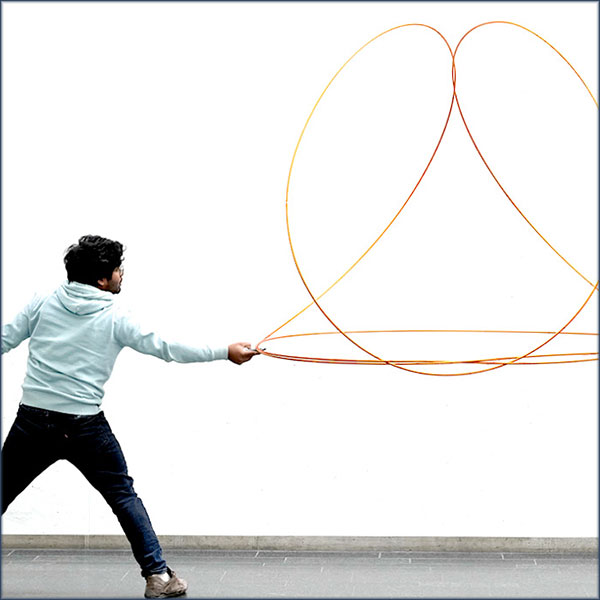Feature: Sports in the lab
That’s not fair!
Providing equal opportunities for everyone sounds a great idea. But the closer you look, the more you see it’s an illusion. We look at three examples.

The Swiss Paraplegic Centre in Nottwil wants to train athletes and help rehabilitate patients by means of eccentric muscle work. | Photo: Gian Paul Lozza
Two athletes compete against each other under the same conditions. It could be an exciting contest. Who wins and who loses depends on motivation, discipline and willpower. This is why millions of people watch sports, either in stadiums or on TV.
But perhaps the viewing public is mistaken. Often, it’s not the individual performance that decides who’s first across the line. It’s the equipment, the training programme, or sometimes just having the right genetic predisposition. Not even researchers today agree about what makes a contest truly fair.
 Doping – Using drugs to compensate for disadvantages
Doping – Using drugs to compensate for disadvantages
There’s erythropoietin (EPO), for example. It’s a substance found naturally in the body that stimulates the production of red blood cells. This increases the body’s oxygen intake, which in turn improves one’s performance in sports. Cyclists who naturally produce more EPO are therefore clearly at an advantage. Wouldn’t it be fair to allow sportspeople to use extra EPO, so that they are not already at a disadvantage when they start a race?
“Fairness really only means that the same rules apply to everyone in a race”, says Alexandre Mauron, a professor emeritus in bioethics at the University of Geneva. According to this definition, both options would be fair: banning EPO altogether, or allowing it. However, it would be unfair to allow only a few cyclists – those at a natural disadvantage – to compensate artificially for what they lack.
At least from an ethical standpoint, medically supervised doping would then be defensible, says Mauron. “Other sports, like boxing and base-jumping, are also a danger to our health. It is societally acceptable for responsible adults to decide for themselves what risks they want to take. Of course, whether or not that broad acceptance is itself ethically defensible is a legitimate question. But it’s got nothing to do with ‘fairness’”.
Raphaël Faiss is a sports physiologist and a former cycling trainer, and he sees things very differently. As the research manager at the Center of Research and Expertise in Anti-Doping Sciences at the University of Lausanne, he is on the hunt for better detection methods for banned substances. “One of the functions of sport in our society is to communicate to our children that you can reach your goal through work and self-discipline”, he says. So reaching your goal quicker by swallowing pills is something he simply finds unacceptable.
“Anti-doping measures are a means of giving a fair chance of winning to sportspeople who train hard”, says Faiss. It will never be possible to prevent doping completely, though in recent years it’s been getting ever more difficult for dopers to slip through the net. But training at high altitude, for example, is something that Faiss finds acceptable (this boosts the body’s production of red blood cells). “In contrast to doping, this also demands a certain commitment on the part of the athletes, and it all happens in a natural way”. But someone who uses an unnatural means of levelling out a genetic disadvantage ought to renounce any hope of a career as a top-ranking athlete.
 Gender – Who should be allowed to take part in women’s races?
Gender – Who should be allowed to take part in women’s races?
The ‘natural’ argument is not always sufficient for determining rules that are fair. This is proven by the case of the South African runner Caster Semenya, who is a champion middle-distance runner. Many of Semenya’s co-competitors have felt at a disadvantage when running against her, because a biological variation in her sexual development means she has a higher level of testosterone.
The question as to whether she should still be allowed to run against other women was debated by the International Court of Arbitration for Sport for several years. In 2020, the Swiss Federal Court confirmed a rule instituted by the International Association of Athletics Federations (IAAF) that made five nanomoles per litre of blood the upper limit allowed for testosterone in middle-distance women runners. Intersex women are given the option of taking hormones to lower their testosterone level.
It is controversial as to whether this rule is truly suited to assigning sportswomen to the correct sex category. Faiss concedes that there is no unambiguous, scientific foundation for it: “It is certainly not ideal to determine classifications using a single substance”. But testosterone is a very effective performance-enhancing substance, and when it comes to testosterone concentration, there is a clear distinction between women and men that makes this seem a fair way of determining their sex. Faiss believes that one solution might be to create a new category in sports for people whose testosterone level is situated between what is deemed normal for men and women.
“But these women don’t want to race in a separate, alternative category. They want to take part in women’s races”, says Lena Holzer, a legal expert who wrote her doctorate on gender issues in sports at the Graduate Institute in Geneva and at King’s College London. “We can carry out as many scientific studies as we want, but it’s also about the image of fairness we want to have in sports”, she says. “Is it important to us to create equality of opportunity that is aimed at a single characteristic such as testosterone, but which is going to exclude a number of women? Or do we want sports that are inclusive and represent the most varied sections of the population?”. Holzer is convinced that society is going to have to rethink its views. For example, instead of competition, the aspect of cooperation could be given greater prominence at sports events – just as has already been attempted successfully at the Youth Olympic Games. In the curling competition at these Youth Games, for example, mixed, international teams of boys and girls compete against each other. It’s the shared experience that then becomes the most important aspect.
 Equipment – Do shoes determine who wins gold?
Equipment – Do shoes determine who wins gold?
But in most other sports competitions, the point is still to win and break records. And it’s no secret that innovative technologies can offer athletes a decisive advantage. In recent years, a new type of running shoe has been causing a stir. Thanks to its special foam and a built-in carbon-fibre plate in the sole, it returns more of the energy applied by the foot when it lands on the ground. This means runners can improve their running economy by some four percent.
According to Jess Snedeker, an expert in biomechanics at the University of Zurich and ETH, such small margins can make a huge difference in a sport like running, where often a fraction of a second is vitally important. And this shoe has accordingly been responsible for numerous new records. Runners with other sponsors are at a disadvantage.
Besides the right equipment, however, the genetic ‘lottery’ is crucial in deciding who remains an amateur sportsperson and who becomes a sporting superstar. Snedeker’s team recently discovered a genetic variation that gives tendons greater rigidity; this allows them to store more elastic energy, just like the new shoes. As a result, people who possess this gene can jump more than 13 percent higher than other people. Snedeker suspects that this gene is overrepresented among professional basketball players and sprinters. To his regret, however, the National Basketball Association in the USA has refused him permission to carry out genetic tests among their players. But it is well known that an above-average number of people from West Africa carry this gene, and this is the region of origin of many elite sportspeople.
“So really, when we congratulate our sporting stars, we’re also congratulating them for their genome and for their access to the best technology”, says Snedeker. Such inequalities are rarely considered today in competitions – but the Norwegian sports philosopher Sigmund Loland has a proposed solution: in sports where the equipment plays a decisive role, the equipment should be standardised, similar to what happens today in yachting competitions. And physical characteristics that sportspeople cannot influence significantly through their own efforts – such as their height or testosterone levels – should be compensated by means of a new classification or handicap. For example, there could be different classes in basketball, depending on the height of the participants. This principle is already in use in disabled sports, where there are classifications and handicaps based on different physical abilities so that all competitors have the same starting chances.
Snedeker does not find this suggestion bad in itself, and he could imagine many types of sports becoming even more attractive as a result: “In wrestling, for example, every weight class has its own style, and that’s precisely what makes it interesting”. But if a sport is only about having the best equipment or the right genes, then watching it is no fun anymore.
But for the ethicist Alexandre Mauron, this is the crux of the matter: “Ultimately, the most important question is whether the essence of the sport remains. Is competition still taking place between sportspeople, or is it being battled out by their hidden, fellow combatants in pharma labs or the R&D departments of their sponsors? If it’s the latter, then no one will want to watch any more”.




